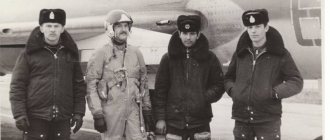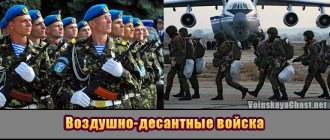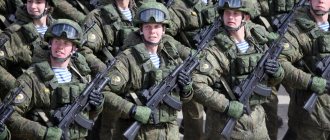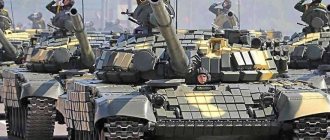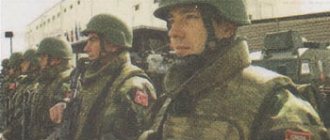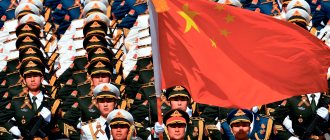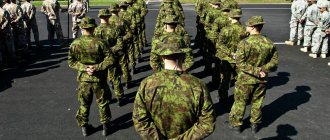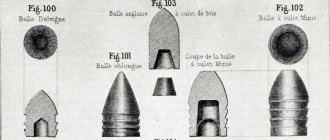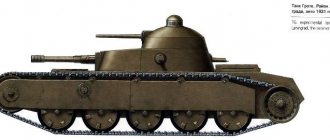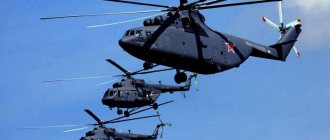Hi all! The next song was written at a time when the notorious drunken airborne division was stationed in Bolgrad. The song is called “Senior Lieutenant” and is dedicated to one of my friends.
The composition was included in the album “First Jump”, recorded in 1999 in Moscow. I rarely performed it at concerts, due to some “specificity”.
I mainly performed in front of the soldiers, and singing to the soldiers about the officer’s drunkenness is somehow inconvenient. Today, for some reason, I remembered this song and the times of the drunken USSR Airborne Division stationed in the city of Bolgrad, Odessa region.
Why is the Airborne Division drunk?
The city of Bolgrad, Odessa region, where I was lucky to be born, was known to the paratroopers of the Soviet Union thanks to the 98th Guards Svir Airborne Division. It was also called the Bolgrad drunken division, behind the scenes, of course.
The 98th Airborne Division was transferred to Bolgrad from Belogorsk, Amur Region in 1969. Officers, accustomed to strong alcoholic drinks, initially called homemade wine, which Bessarabian Bulgarians produce in tons, “kvass.” And, by the way, in vain...
Intoxication from wine occurs later than from strong alcoholic drinks. Therefore, out of habit, you may not calculate the dose and get lost in space.
There is an old joke. Vasily Filippovich Margelov arrives with a check at the Pskov division. He asks the commander: “How much alcohol do you need to feed your division?” He answers: “10 tons of alcohol, 30 tons of wine.” Margelov says: “Okay.”
The same story is happening in other divisions - in Tula, Vitebsk, etc. Only the commander of the Bolgrad drunken division answers the question of the commander of the USSR Airborne Forces: “Two bottles of vodka!” Margelov asks: “Just?” And the commander says: “Yes, this is for me and the political officer!” The rest of me are already “on the horns!”
Airborne troops in the modern army
The Airborne Forces of the Russian Federation are the legacy of the Union of Soviet Socialist Republics, divided in 1992 between the union republics. The troops became the reserve of the Supreme Commander-in-Chief, the main tasks remained unchanged.
Airborne troops during a ceremonial march
Childhood and adolescence with airborne forces
Memories of childhood and school years are directly related to the paratroopers. From the outskirts of Bolgrad, where my parents' house is located, the jumps were clearly visible. My second cousin, Viktor Padalka, served in a separate airborne support battalion. Officer Kazbek Gapov lived nearby, who married a local Bulgarian. He was constantly brought to lunch by a soldier-driver.
At school I was friends with Artur Repka, whose father was the head of the political department of the so-called drunken division. At the dance in the House of Officers, a vocal and instrumental ensemble consisting of conscript soldiers played. They accompanied me when I performed the first song from the stage at one of the school “autumn balls”.
After military service in special forces units of the GRU in the Far East, I graduated with honors from the Odessa Cultural and Educational School and came to work as an assigned worker in Bolgrad at the city House of Culture. I was hired as a methodologist, but in reality I led a vocal-instrumental ensemble and led a group of guitarists.
At one of the joint concerts with the division, a soldier approached me and asked for a guitar. Usually I didn’t give my instrument to anyone. And then for some reason he gave it. He probably remembered himself during his military service.
The soldier's name was Denis Platonov. Now he is an Honored Artist of the Russian Federation, accompanist, arranger and soloist of the legendary group “Blue Berets”. By the way, he remembers that incident. There’s even a photo of him somewhere from that concert.
Denis also joined the group from Bolgrad, after they came to the city on tour. And I still have Yuri Slatov’s autograph. Later, Yuri Alekseevich contributed to the rotation of my song “Blue Sky” on Radio Chanson in the “Katyusha” program.
ABOUT THE ESSENCE OF AIR LANDINGS
It is not known when the idea of airborne assaults, the sending of military formations behind enemy lines by air, appeared. However, for a long time it was strictly fantastic in nature, and only during the First World War was it able to receive at least some material basis in the form of the creation of an air vehicle - an airplane. And if at first the idea was exclusively of a sabotage and reconnaissance nature, then soon, in connection with the rapid development of aviation during the war, with the creation of sufficiently reliable and capacious aircraft, it began to take on a larger-scale logical form, leading to Mitchell’s idea of landing in the rear of German troops first division, and then an entire “airborne” army. However, we can only guess whether this project would have been realized, whether the war would have lasted another year or two, or not. In any case, after the end of the war, although this idea did not receive serious material embodiment, it continued to hover in the air, exciting minds. The “positional nightmare” of the Western Front was in plain sight for everyone, and many military theorists with a passion for innovation (or who considered themselves such) persistently searched for innovative ways that could prevent such a situation in the future.
Thus, for the airborne troops (Airborne Forces), the main, defining goal immediately emerged - to assist the advancing groupings of ground forces. Almost the entire subsequent history of the use of airborne assault forces confirms this thesis*.
* Special positions are occupied by airborne forces on the islands. As a rule, they are carried out as part of facilitating an amphibious assault or, in general, as part of multi-scale military operations at sea. That is, the role of the Ground Forces in this case is played by the Navy. An absolute exception is the scandalous Cretan Airborne Operation (VDO), which did not have a strict link with the actions of either ground or naval forces; thus having a strictly independent character. However, if the connection with the Ground Forces was not possible for completely understandable and objective reasons, then the weak connection with the fleet was forced. Within the framework of this goal, the Airborne Forces were also given the task, which consisted, as a rule, of capturing a certain section of terrain (usually behind the line of contact between the parties) and then holding it for some time (for example, until the approach of advancing ground forces).
A specific combat mission determines the methods and methods of action of the Airborne Forces, which consist of landing (dropping, disembarking), offensive (attack, assault) and defense.
This leads to a general definition of the combat capabilities of the airborne formation, which are:
- in the ability to capture a certain territory (terrain area, object), incl. attack and destroy (knock out) the enemy located there;
- in the ability to organize effective defense of the captured territory (object) for a certain period;
- but all this is subject to the condition of having the ability to be transported by air.
I needed such a lengthy introduction so that the reader (perhaps a complete outsider, but interested in the issue) would immediately grasp the essence of the combat use of airborne assault forces.
Now, let's turn to the actual topic of the article.
New form of airborne forces in Russia
Now let’s travel through 2014 together with Russian Defense Minister Sergei Shoigu. Not long ago he visited a legendary motorized rifle brigade, known since the Chechen war. In 2014, the soldiers of this unit were transferred to Ugra, and the new uniform acquired a new modern look, so now the military in such uniforms are not afraid of any frost. The new clothes were tested in extremely low temperatures, piercing and cold winds.
Sergei Shoigu paid a visit to present awards, the action took place in an open area, and the military had to march in front of the highest leadership of Russia. At first, the form was delivered as an experimental one, but at the end of 2014 it was approved in 9 versions.
The new form for 2014 can be combined in different ways:
for cool weather, it will be enough to wear a jacket with a lining; for windy conditions, it is recommended to wear a jacket under the jacket; in rainy weather, airborne special forces can wear an underwear fleece shirt with a waterproof overall.
During the active training phase or the airborne assault march, the Airborne Forces wear their usual uniform. During theoretical classes, fighters wear lighter office attire.
The uniform of the Russian Airborne Forces in 2014 went through a number of changes: the ears on the earflap hat became longer, easily overlap at the back and are fastened with Velcro, this is quite important and comfortable for the chin. The hat has a top flap that can, if necessary, turn into a sun visor. Outerwear has also undergone many changes, for example, a jacket can be disassembled into several elements. It has become a kind of construction set that can be transformed from an ordinary windbreaker to a warm pea coat.
The entire 2014 field uniform consists of 16 pieces that easily fit into a backpack. Depending on the time of year, the backpack can be light or heavy. In the new field footwear, felt boots were replaced by warm boots with inserts. A winter paratrooper vest has also been added, which does not restrict movement. A warm scarf and a comfortable balaclava were added to the whole set. Reconnaissance overalls are made of waterproof material.
Leadership of the Russian Airborne Forces[ | ]
- Commander of the Airborne Forces of the Russian Federation - Colonel General Serdyukov Andrey Nikolaevich
- Chief of Staff - First Deputy Commander of the Airborne Forces of the Russian Federation - Colonel General Evgeniy Alekseevich Ustinov
- Deputy Commander of the Airborne Forces of the Russian Federation - Major General Anatoly Georgievich Kontsevoy
- Deputy Commander of the Russian Airborne Forces for Collective Rapid Reaction Forces and Peacekeeping Activities - Lieutenant General Andrey Vladimirovich Kholzakov
- Deputy Commander of the Russian Airborne Forces for airborne training - Lieutenant General Alexander Yurievich Vyaznikov
- Deputy Commander of the Russian Airborne Forces for Armaments - Major General Ragozin Alexey Nikolaevich
- Deputy Commander of the Russian Airborne Forces for combat training - Major General Sergei Nikolaevich Volyk
- Deputy Commander of the Airborne Forces of the Russian Federation for military-political work - Major General Viktor Methodievich Kupchishin
- Deputy Commander of the Russian Airborne Forces for Logistics - Major General Timergazin Narima Kamilievich
- Deputy Commander of the Russian Airborne Forces for Construction and Cantonment - Major General Leonid Anatolyevich Shevchenko
Airborne Forces uniform in the USSR
Military clothing of the Airborne Forces was divided into 4 groups:
summer uniform for every day for sergeants and soldiers; summer casual clothing for sergeants, airborne cadets, soldiers; summer casual clothing of cadets, where buttonholes and shoulder straps indicated the branch of service; winter clothing for sergeants, cadets, military builders, where buttonholes, shoulder straps and a badge on the sleeve are according to the branch of service.
In addition, the military uniform in the USSR had to take into account the climatic features of the area where the troops were located. For example, in the Finnish war, a soldier’s winter clothing was supplemented with:
hats with ear flaps, padded jackets, cotton pants, white camouflage robes and hoods.
The rest of the military clothing in the USSR, for example, for rifle units, looked like a simple budenovka and boots. In addition to their canvas helmets, the paratroopers had large goggles for pilots. This attribute was issued due to the fact that they often had to parachute. If you take a close look at the photo or film materials of those times, you can see that even ceremonial clothing could consist of helmets and glasses, and a parachute jumpsuit.
The military uniform of a USSR officer had a cap with a chin strap for parachute jumping; ordinary Red Army soldiers hid their caps in their bosoms. There were no special shoes for jumping, so felt boots often fell off the feet when the parachute opened. Officer's shoes also presupposed the existence of fur boots.
The usual uniform of the Airborne Forces in Russia differed from other troops only in blue buttonholes; officers had gold trim around them. The piping on the buttonholes of political workers, sergeants or privates was black; this was considered a kind of office option. Officers were also distinguished by blue piping on the collar and the upper edge of the cuffs, and side stitched seams on the riding breeches. Caps with blue piping and red stars or dark blue caps with red enamel stars - all this was typical for the leadership of the Airborne Forces.
During the existence of the Soviet Union, the Ukrainian Airborne Forces were no different in their military uniform from the Russian troops; one single template was in effect throughout the entire USSR. After the collapse of the state, Ukraine had to “redraw” not only the meaning of the type of troops itself, but also the form of intelligence. Until recently, the airborne forces of these two countries could only be distinguished by different stripes, which depicted the coats of arms of different countries. Ukraine's uniform depicts a trident on a yellow-blue background.
